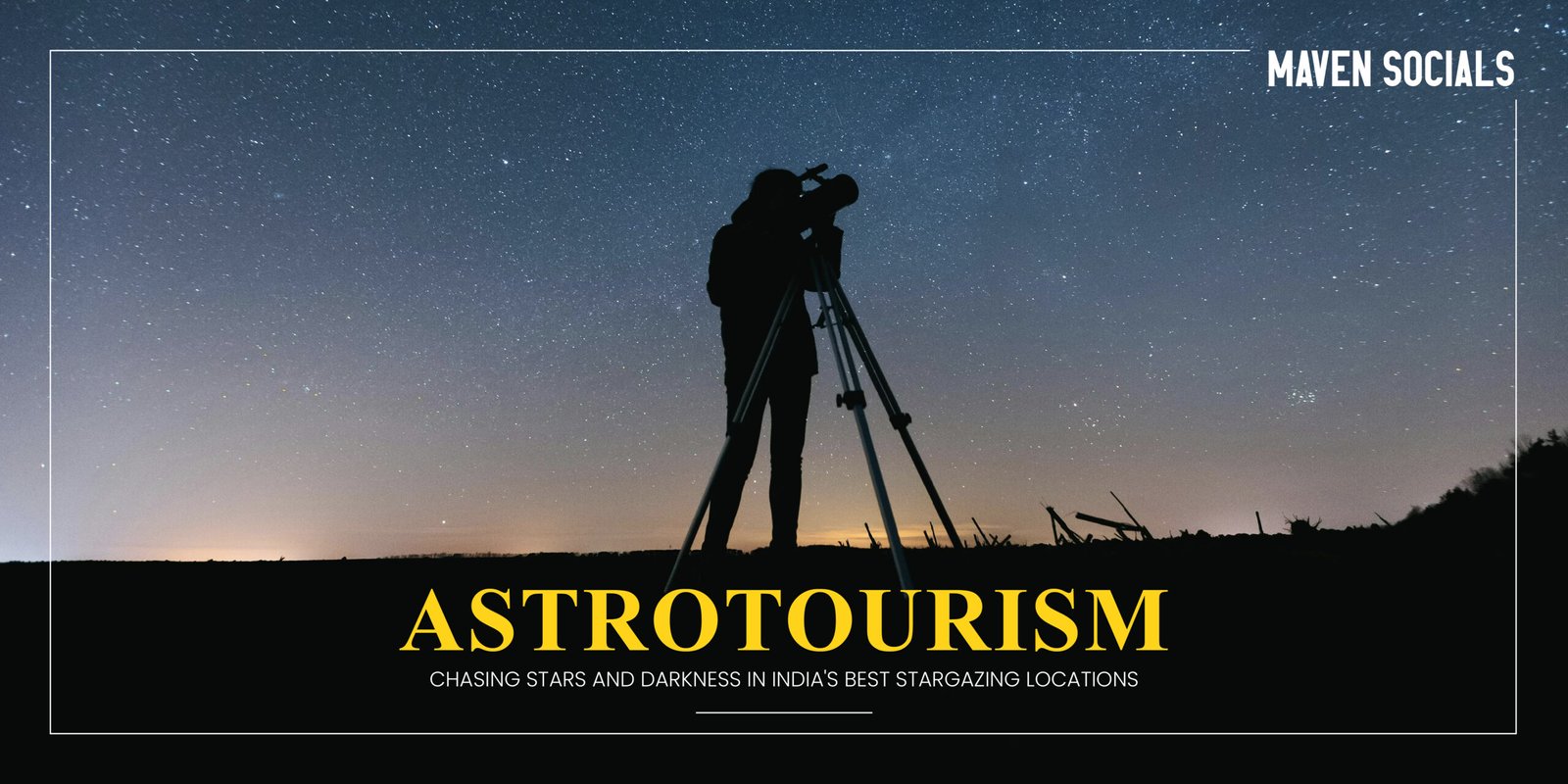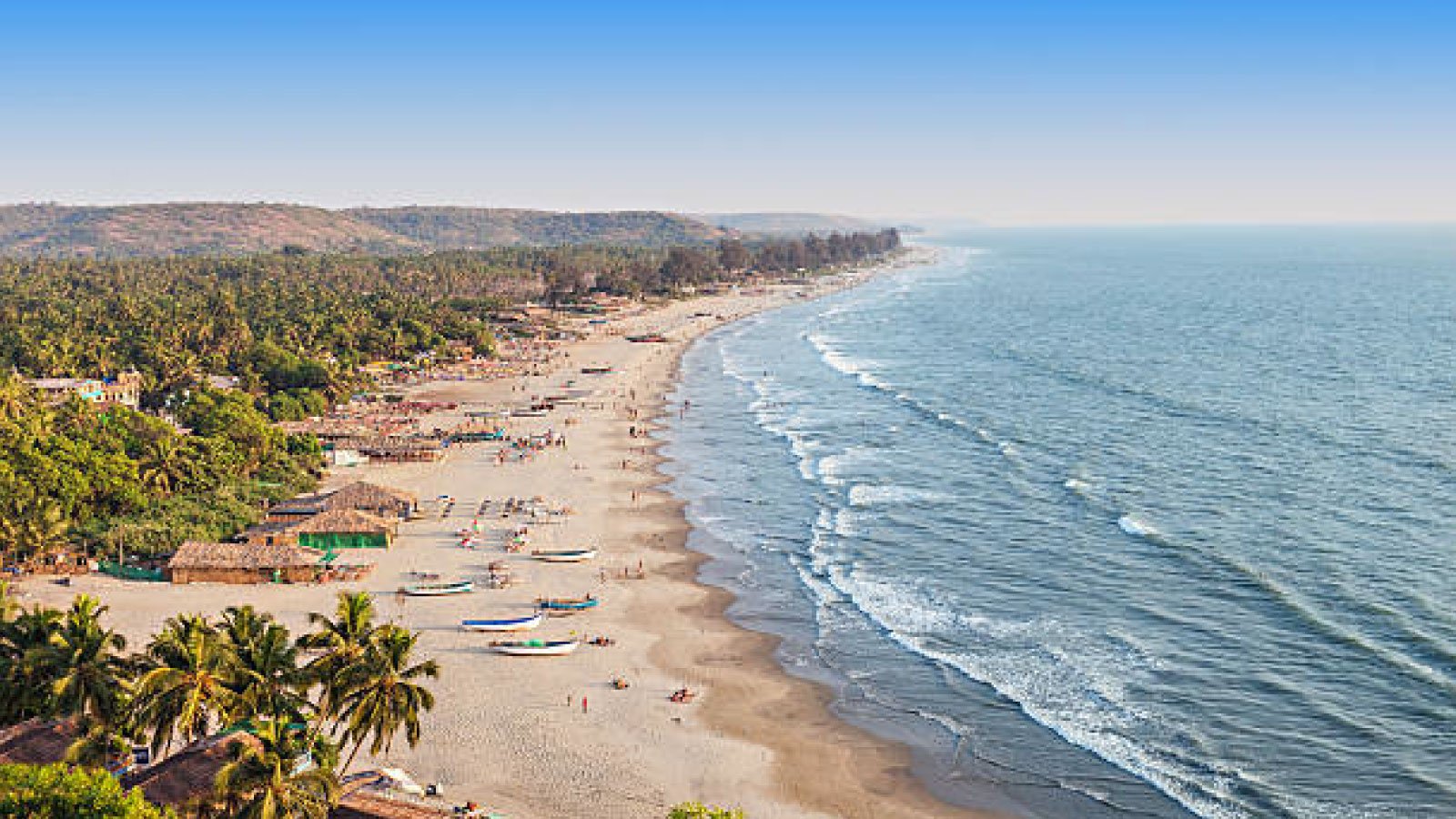The night sky has always fascinated humanity, but in our increasingly urbanized world, the stars are becoming a rare sight. Enter astrotourism—a revolutionary travel trend that’s transforming how we connect with the cosmos. This unique form of tourism involves traveling to destinations with minimal light pollution to witness the night sky in all its celestial glory, and India offers some of the world’s most spectacular stargazing destinations.
What is Astrotourism and Why is it Gaining Popularity?
Astrotourism, also known as astronomical tourism, centers around observing celestial phenomena through activities like stargazing, moongazing, astrophotography, and viewing astronomical events such as meteor showers and eclipses. Unlike traditional sightseeing, astrotourism draws travelers to remote, dark sky locations where artificial light doesn’t interfere with the natural brilliance of the cosmos.
The popularity of astrotourism has surged dramatically in recent years. According to industry reports, the global astro tourism market, valued at $250 million in 2023, is projected to grow at a 10% CAGR, reaching $400 million by 2030, with India emerging as a prime destination. This growth stems from several factors:
- Increasing urbanization that obscures night skies in cities
- A growing appreciation for sustainable and unique travel experiences
- The psychological benefits of connecting with nature and the universe
The COVID-19 pandemic further accelerated this trend, as people confined to their homes found solace in stargazing and developed a deeper appreciation for the cosmos. Today, astrotourism represents more than just a hobby—it’s a pathway to spiritual connection, scientific learning, and unforgettable memories under the stars.
India’s Premier Stargazing Destinations
Hanle, Ladakh: India’s Crown Jewel of Dark Skies
Perched at an altitude of 4,500 meters in Ladakh‘s remote Changthang region, Hanle stands as India’s premier astrotourism destination. Home to the Indian Astronomical Observatory (IAO), this village was declared India’s first Dark Sky Reserve, making it a globally recognized site for astronomical observation.
What makes Hanle extraordinary is its combination of extreme altitude, minimal light pollution, and over 250 clear nights annually. The thin atmosphere at this elevation provides exceptional transparency, allowing visitors to observe:
- Saturn’s rings
- Jupiter’s moons
- Distant galaxies
- The breathtaking Milky Way with remarkable clarity
The observatory houses sophisticated equipment including the High-Altitude Gamma-Ray Telescope (HAGAR) and the 2-meter Himalayan Chandra Telescope.
Best time to visit: May to September when routes are accessible and skies are clearest.
Spiti Valley, Himachal Pradesh: The Himalayan Desert Observatory
The Spiti Valley, known as “Little Tibet,” offers a unique cold desert environment perfect for astronomical observations. Villages like Kibber (14,200 feet), Komic (15,027 feet), and Langza (14,500 feet) provide unobstructed 360-degree views of the night sky.
The valley’s remote location and sparse population create pristine dark skies, while the dry climate ensures over 250 clear nights annually. Chandratal Lake deserves special mention—the lake’s still waters create mirror-like reflections of the night sky, offering one of the most ethereal stargazing experiences in India.
Best time to visit: May to September for accessible mountain passes and optimal viewing conditions.
Rann of Kutch, Gujarat: Stargazing Over the White Desert
The Rann of Kutch offers a completely different but equally mesmerizing astrotourism experience. This vast white salt desert stretches endlessly, providing unobstructed views of the night sky. The unique landscape acts like a natural mirror, reflecting starlight and creating an otherworldly atmosphere.
During the Rann Utsav festival, visitors can combine cultural experiences with stargazing, enjoying traditional music and crafts under a canopy of stars. The desert’s flat terrain and absence of light pollution make it ideal for both naked-eye observation and astrophotography.
Best time to visit: October to March, coinciding with the Rann Utsav for the full cultural experience.
Coonoor, Tamil Nadu: The Southern Sky Sanctuary
In South India, Coonoor emerges as an accessible astrotourism destination. Located in the Nilgiri Hills, this hill station offers clear skies at moderate altitudes, making it perfect for beginners and families. The region’s tea plantations and hillsides provide peaceful stargazing spots away from urban light pollution.
Best time to visit: October to March when skies are clearest and weather is most pleasant.
Optimal Timing: When to Chase the Stars
Seasonal Considerations
The best stargazing in India typically occurs during winter months (October to March) when skies are clearest and atmospheric conditions are most stable. However, different regions have specific optimal periods:
- High-altitude destinations (Ladakh, Spiti): May to September for accessibility
- Desert regions (Rann of Kutch, Jaisalmer): October to March for comfortable temperatures
- Hill stations (Coonoor, Coorg): October to March for minimal cloud cover
Meteor Shower Calendar
India offers excellent opportunities to witness major meteor showers:
- Perseids (July 17 – August 24): Peak on August 12-13, producing up to 100 meteors per hour
- Geminids (December 4-17): Peak on December 13-14, considered the year’s best meteor shower with up to 150 meteors per hour
- Leonids (November): Moderate activity but known for spectacular fireballs
- Lyrids (April): Spring shower visible in early morning hours
Moon Phase Planning
New moon periods provide the darkest skies for optimal deep-sky observation, while full moon nights offer different experiences—illuminating landscapes dramatically but washing out fainter stars. Many astrotourists plan trips around new moon phases for the best Milky Way visibility.
Essential Tips for First-Time Astrotourists
Equipment Essentials
For Beginners:
- Red-filtered headlamp: Preserves night vision while navigating
- Comfortable folding chair: For extended observation sessions
- Star chart or astronomy app: Apps like Stellarium help identify constellations
- Warm clothing: Nights can be surprisingly cold even in warmer regions
- Basic binoculars: 7×50 or 10×50 binoculars reveal craters, star clusters, and nebulae
For Photography Enthusiasts:
- DSLR or mirrorless camera: Any modern camera capable of manual settings
- Wide-angle lens: 14-35mm lenses capture more sky
- Sturdy tripod: Essential for long exposures
- Remote shutter release: Prevents camera shake during long exposures
Photography Settings for Beginners
Basic Milky Way Photography Settings:
- Manual mode: Full control over exposure
- Aperture: f/2.8 or faster (f/1.4-f/2.8 ideal)
- ISO: Start between 3200-6400
- Shutter speed: 15-25 seconds (use 500 rule: 500÷focal length)
- White balance: 3800-4000K for natural colors
- Focus: Manual focus on infinity or distant light source
Planning Your Trip
- Check weather forecasts: Clear skies are essential
- Research moon phases: Plan around new moon for darkest skies
- Arrive early: Allow time for eyes to adjust to darkness (20-30 minutes)
- Bring extra batteries: Cold weather drains power quickly
- Pack snacks and warm drinks: Stargazing sessions can last hours
Guided Experiences and Astro-Camps
Professional Tour Operators
Several organizations now offer structured astrotourism experiences:
- Starscapes: Operates astro-camps across India with expert-led sessions, telescope observations, and astrophotography workshops.
- ARC Educators: Offers comprehensive astro-trips to destinations like Rann of Kutch, Spiti Valley, and Gir National Park, combining astronomy with adventure.
- Jungle Camps India: Reports that nearly 40% of guests at Pench Tiger Reserve (India’s first certified Dark Sky Park) participate in stargazing activities.
Observatory Experiences
AstroStops Observatory in Nainital provides a complete astronomical experience with high-end telescopes, expert astronomers, and comfortable accommodations. Visitors can observe planetary details like Saturn’s rings and Jupiter’s Great Red Spot while learning about deep-sky objects.
Specialized Astro-Camps
These guided experiences typically include:
- Professional telescope sessions: High-quality equipment for detailed observations
- Astrophotography workshops: Learning proper techniques and camera settings
- Educational presentations: Understanding celestial mechanics and cosmic phenomena
- Cultural integration: Combining astronomy with local traditions and stories
- Comfortable accommodations: From luxury tents to eco-friendly lodges
The Growing Infrastructure
India’s astrotourism infrastructure is rapidly expanding. Pench Tiger Reserve became India’s first certified Dark Sky Park, setting a precedent for conservation-focused astrotourism. The International Dark-Sky Association continues to evaluate more Indian locations for certification, promising expanded opportunities for travelers.
Hotels and resorts in stargazing hotspots are incorporating astronomy-focused amenities, from rooftop observatories to specialized astronomy guides. This infrastructure development makes astrotourism more accessible to families and casual travelers, not just serious astronomy enthusiasts.
Beyond the Stars: The Astrotourism Experience
Astrotourism offers more than just celestial observations—it provides a transformative experience that combines science education, cultural immersion, and personal reflection. Many travelers report profound emotional connections when witnessing the Milky Way’s majesty or observing Saturn’s rings for the first time.
The trend also supports local communities in remote areas, providing sustainable tourism income while preserving dark skies through light pollution awareness. As one astrotourism operator noted, “Stargazing offers a different way to connect with nature—these moments, away from screens and city lights, are becoming a reason for people to travel.”
Conclusion
Astrotourism represents a unique intersection of science, travel, and spiritual experience. As India‘s infrastructure develops and awareness grows, the country is positioned to become a global leader in astronomical tourism. Whether you’re seeking the technical challenge of astrophotography, the educational value of guided observations, or simply the meditative experience of lying under a star-filled sky, India’s diverse landscapes offer unmatched opportunities to reconnect with the cosmos.
The stars have guided humanity for millennia—now they’re guiding a new generation of travelers to some of the most remote and beautiful places on Earth. In an age of digital overwhelm and urban noise, astrotourism offers something increasingly rare: silence, darkness, and the humbling perspective of our place in the infinite universe.












